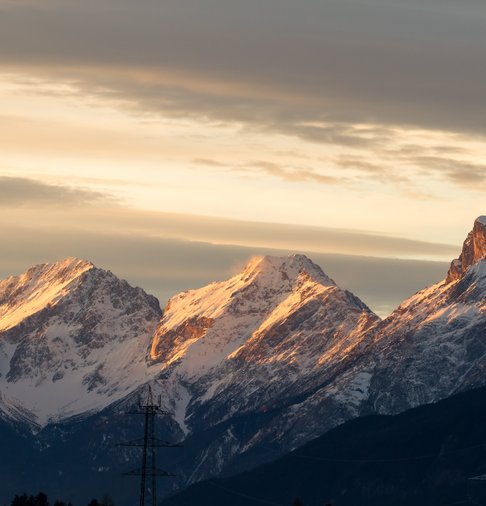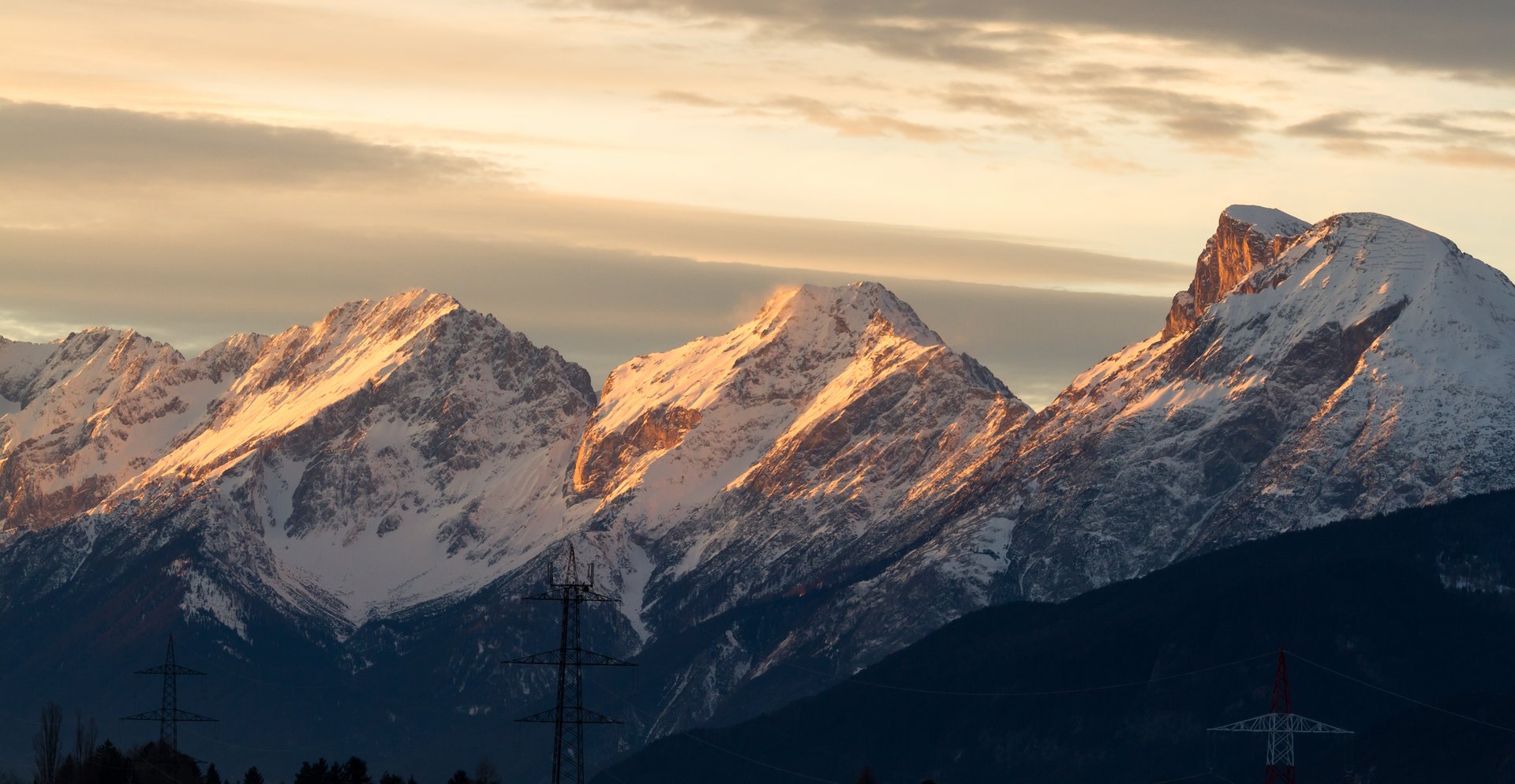The Hohe Munde – The sleeping giantess above the Mieming Plateau

Where does the name “Munde” come from?
With its distinctive silhouette towering over Telfs and the Mieming Plateau, the Hohe Munde is far more than just a popular peak – it is a presence: mysterious, changeable, and full of stories.
Where its name comes from, no one knows for sure anymore. Linguists suspect it may come from Latin – from mons (mountain) or munt (alpine pasture). In old records, the name “Munta” is also found, which still lives on in the local dialect. A name as old as the paths that have led up this special mountain for centuries.

The Sleeping Giantess
Viewed from Telfs, the Hohe Munde appears like a reclining woman – a sleeping giantess, as the locals say. The two summits – the rounded eastern peak (2,592 m) and the pointed western peak (2,662 m) – can, with a little imagination, be seen as the contours of head and body.
And, as befits a giantess, the Munde is not always in the same mood:
- In the morning light, she appears gentle and inviting.
- In fog or thunderstorms, she seems threatening and unwelcoming.
This changeability makes her the “moody mountain” of the region – a being that lives, breathes, and changes its temperament.
A Mountain for Explorers
Whether as a sporty day tour via the Rauthhütte, a challenging ridge traverse, or a spring ski tour – the Hohe Munde offers the right adventure for many mountain enthusiasts. Those who make it to the summit are rewarded with a panorama stretching from the Inn Valley across the Wetterstein and Karwendel ranges all the way to the Zugspitze.



